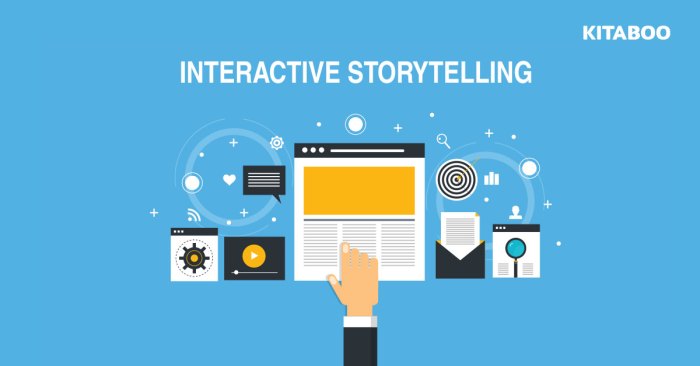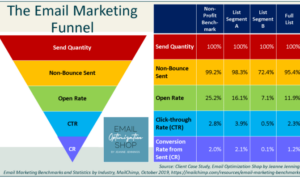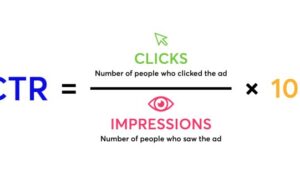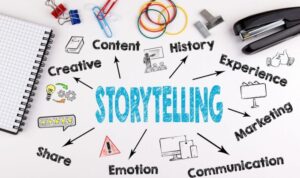Kicking off with Creating Content with Storytelling Techniques, this guide dives into the art of crafting captivating narratives that resonate with the audience, blending creativity and strategy seamlessly.
Explore the power of storytelling in content creation and learn how to use different techniques to elevate your brand’s message.
Introduction to Creating Content with Storytelling Techniques
Storytelling in content creation involves using narratives, characters, and emotions to engage and connect with the audience on a deeper level. It goes beyond just presenting facts and figures, creating a memorable and impactful experience for the viewers or readers.
Using storytelling techniques in content development is crucial for capturing and retaining the audience’s attention. It helps in making the information more relatable, digestible, and memorable. By weaving a compelling story around the message you want to convey, you can evoke emotions, build trust, and inspire action.
Examples of Successful Content Created Using Storytelling Methods
- A powerful video campaign by Nike featuring athletes sharing their personal stories of overcoming challenges and achieving success, inspiring viewers to push their limits.
- A blog post by Airbnb sharing stories of travelers exploring unique destinations and connecting with locals, showcasing the transformative power of travel experiences.
- An Instagram campaign by Coca-Cola using user-generated content to tell heartwarming stories of kindness and generosity, spreading positivity and building brand loyalty.
Understanding the Elements of a Compelling Story

When it comes to crafting a compelling story, there are several key elements that play a crucial role in engaging the audience. These elements work together to create a narrative that captivates and resonates with the readers or viewers.
Characters
Characters are the heart and soul of any story. They drive the plot forward, evoke emotions, and allow the audience to connect with the narrative on a personal level. Well-developed and relatable characters make the story more engaging and memorable. Whether it’s a hero overcoming obstacles or a complex antagonist challenging the status quo, the characters bring the story to life.
Plot
The plot is the sequence of events that unfold in a story. It includes the introduction, rising action, climax, falling action, and resolution. A well-crafted plot keeps the audience hooked and eager to find out what happens next. Twists, turns, and unexpected developments add excitement and intrigue to the narrative, making it compelling and unforgettable.
Setting
The setting of a story provides the backdrop against which the events take place. It helps create the atmosphere, establish the mood, and immerse the audience in the world of the story. Whether it’s a futuristic dystopia, a quaint countryside village, or a bustling city, the setting sets the stage for the characters and conflicts to unfold.
Conflict
Conflict is the driving force behind any compelling story. It creates tension, propels the plot forward, and challenges the characters to grow and change. Whether it’s a physical confrontation, an internal struggle, or a clash of ideologies, conflict adds depth and complexity to the narrative. Resolving conflicts keeps the audience engaged and invested in the outcome.
Emotions and Empathy
Emotions and empathy play a crucial role in storytelling by allowing the audience to connect with the characters and their experiences. When readers or viewers feel a range of emotions, from joy and excitement to sadness and anger, they become emotionally invested in the story. Empathy allows them to see the world through the eyes of the characters, fostering a deeper understanding and connection.
Incorporating Story Arcs in Content Creation

Incorporating story arcs in content creation is a powerful way to engage audiences and keep them hooked from start to finish. By structuring your content using different types of story arcs, such as the hero’s journey and dramatic structure, you can create compelling narratives that resonate with your viewers.
Different Types of Story Arcs
- The Hero’s Journey: This classic story arc follows a hero who embarks on an adventure, faces challenges, and ultimately undergoes personal growth or transformation.
- Dramatic Structure: This story arc typically consists of exposition, rising action, climax, falling action, and resolution, creating a sense of tension and release throughout the narrative.
Structuring Content Using a Story Arc
When structuring content using a story arc, it’s important to establish a clear beginning, middle, and end. Start by introducing your audience to the main characters or concepts, then build up tension and conflict before reaching a climax and ultimately resolving the story in a satisfying way.
Examples of Brands Using Story Arcs, Creating Content with Storytelling Techniques
- Apple: Apple often uses the hero’s journey in their marketing campaigns, positioning their products as tools that can help customers overcome challenges and achieve their goals.
- Coca-Cola: Coca-Cola’s marketing campaigns frequently follow a dramatic structure, building anticipation and excitement before delivering a heartwarming resolution that resonates with viewers.
Using Visual Storytelling for Impact
Visual storytelling is a powerful tool that can enhance the overall impact of any content. By incorporating images, videos, and graphics, creators can captivate their audience in a way that words alone cannot achieve. Visual elements not only help to break up large blocks of text but also provide a visual representation of the story being told, making it more engaging and memorable for the audience.
Importance of Visual Elements in Storytelling
Visual elements play a crucial role in storytelling by helping to convey emotions, set the tone, and create a more immersive experience for the audience. Images, videos, and graphics can evoke strong emotional responses and enhance the overall message of the content. By utilizing visual elements effectively, creators can communicate complex ideas in a more digestible and impactful way.
- Images: High-quality images can help to create a visual narrative that complements the text. They can evoke emotions, provide context, and enhance the overall aesthetic of the content.
- Videos: Videos are a dynamic way to tell a story and engage the audience. They can capture movement, sound, and emotion in a way that static images cannot, creating a more immersive experience for viewers.
- Graphics: Infographics, charts, and other visual aids can help to simplify complex information and make it easier for the audience to understand. They can add visual interest to the content and enhance the storytelling process.
Visual elements in storytelling can create a more memorable and impactful experience for the audience, leading to increased engagement and retention of the message being conveyed.
Integrating Images, Videos, and Graphics into Content
To effectively integrate visual elements into content, creators should consider the following:
- Choose visuals that complement the story and enhance the message being conveyed.
- Ensure that the visuals are of high quality and relevant to the content.
- Use a mix of images, videos, and graphics to create a dynamic and engaging experience for the audience.
- Place visual elements strategically throughout the content to break up text and maintain the audience’s interest.
Enhancing Audience Engagement through Visual Storytelling
Visual storytelling can significantly enhance audience engagement by:
- Capturing the audience’s attention and drawing them into the story being told.
- Eliciting emotional responses and creating a more immersive experience for viewers.
- Increasing the shareability of content on social media platforms due to the visual appeal.
- Improving the overall retention of information by presenting it in a more visually stimulating way.
Crafting Compelling Narratives for Different Platforms: Creating Content With Storytelling Techniques
Crafting compelling narratives for different platforms requires an understanding of the unique characteristics and preferences of each audience. Whether it’s social media, blogs, or videos, the storytelling techniques need to be adapted to suit the platform and engage the viewers effectively.
Comparing Storytelling Techniques for Various Platforms
- On social media, where attention spans are short, focus on concise storytelling with eye-catching visuals to grab the audience’s attention quickly.
- For blogs, you have more space to develop a narrative, so you can dive deeper into the story with detailed descriptions and engaging writing.
- In videos, the visual and auditory elements play a crucial role in storytelling, so make sure to use a combination of visuals, sound effects, and music to enhance the narrative.
Adapting Storytelling to Fit Different Audience Preferences
- Understand your audience’s demographics, interests, and behaviors to tailor your storytelling approach accordingly.
- Use language and tone that resonate with the specific audience on each platform to create a more personalized and engaging narrative.
- Experiment with different storytelling formats, such as interactive stories or user-generated content, to cater to diverse audience preferences.
Differences in Storytelling Between Long-Form and Short-Form Content
- In long-form content, you have the luxury of building complex narratives with intricate details and character development, allowing for a more immersive storytelling experience.
- Short-form content requires concise storytelling with a focus on capturing the essence of the story in a limited space, making every word and image count.
- Long-form content is ideal for in-depth exploration of topics, while short-form content is great for delivering quick, impactful stories that resonate with audiences on-the-go.
Analyzing the Psychology of Storytelling
Storytelling is a powerful tool that goes beyond just entertaining an audience. It taps into the psychology of human behavior, affecting the brain in unique ways and building connections that can influence how people think and act.
The Impact of Storytelling on the Brain
- Storytelling activates various parts of the brain, including those responsible for processing emotions, memories, and sensory experiences.
- When we hear a compelling story, our brains release oxytocin, a hormone that enhances empathy and trust, making us more receptive to the message being conveyed.
- Engaging narratives stimulate the brain’s neural activity, creating a more memorable and impactful experience compared to just facts or data.
Building Connections with the Audience
- Storytelling helps create a personal connection with the audience by triggering emotional responses and fostering a sense of relatability.
- By sharing authentic stories that resonate with people’s experiences, brands can establish trust and loyalty among their audience.
- Connecting on an emotional level through storytelling can lead to long-lasting relationships and increased engagement with the content.
The Role of Cognitive Processing in Storytelling
- Storytelling engages cognitive processes such as attention, memory, and imagination, allowing individuals to make sense of the narrative and relate it to their own lives.
- By presenting information in a narrative form, storytellers can simplify complex concepts and make them easier to understand and remember.
- Cognitive processing in storytelling influences how we perceive and interpret information, shaping our beliefs and behaviors in the process.





